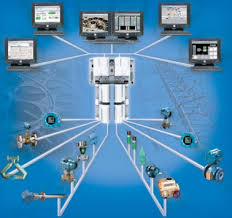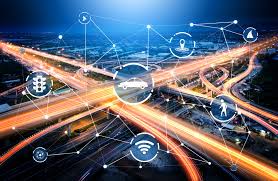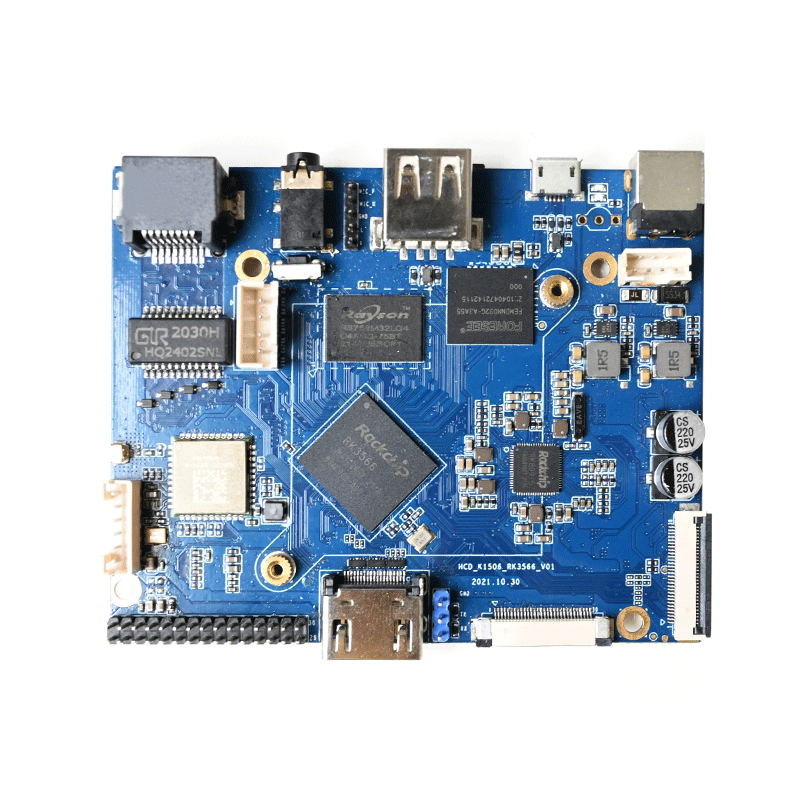
Smart-Driven Future Industrial Control Systems
The evolution of Industrial Control Systems has been nothing short of revolutionary. Today, control systems form the backbone of modern manufacturing, energy, transportation, and utility sectors. As global industries increasingly rely on automation and data-driven decision-making, these systems are being tasked with more critical functions than ever before. We will examine how they have transformed industrial operations, improved safety, enhanced efficiency, and how they continue to evolve in response to emerging trends and global market demands.
Over the past several decades, industrial automation has transitioned from simple, manually operated configurations to complex, fully automated networks. The concept encompasses a wide variety of control architectures, including Supervisory Control and Data Acquisition (SCADA) systems, Distributed Control Systems (DCS), and Programmable Logic Controllers (PLC). Today, Industrial Control Systems are integrated with cutting-edge information technologies, artificial intelligence, and the Internet of Things (IoT), ensuring that industries remain agile and competitive in a rapidly changing global landscape.
The integration of automation into the industrial fabric has delivered numerous benefits, including improved operational efficiency, reduced downtime, and enhanced process safety. For instance, real-time monitoring and control of manufacturing processes minimize the risk of human error and ensure that critical operations run smoothly. Furthermore, the data collected provide valuable insights that enable predictive maintenance and optimization of production workflows.
Historical Evolution of Industrial Control Systems
The history of these systems can be traced back to the early days of industrial automation. Initially, control mechanisms were rudimentary, with operators manually managing machinery and processes. Over time, the need for increased precision and safety led to the development of more sophisticated solutions. The evolution has been marked by significant technological breakthroughs and paradigm shifts that have reshaped industrial operations.
In the early 20th century, Industrial Control Systems were primarily mechanical in nature, relying on relays and basic control circuits to manage industrial processes. As industries grew in scale and complexity, the limitations of these early Industrial Control Systems became apparent. The mid-20th century saw the advent of electronic control systems, which laid the groundwork for modern Industrial Control Systems by introducing electronic sensors and control units that could process data more efficiently.
By the 1970s and 1980s, the introduction of Programmable Logic Controllers (PLCs) revolutionized the field. PLCs allowed for greater flexibility, reliability, and ease of programming, transforming how industries approached automation. During this period, digital displays and computerized interfaces were incorporated, enabling operators to monitor processes in real time and respond more swiftly to anomalies.

In recent years, industrial automation has undergone another major transformation with the integration of advanced computing, networking, and data analytics. Modern systems leverage technologies such as SCADA, DCS, and IoT to create interconnected networks that monitor, control, and optimize industrial processes. This digital revolution has not only increased the efficiency of these systems but has also enhanced their ability to predict and mitigate potential failures before they occur.
Below is a timeline that summarizes key milestones in the evolution of industrial automation:
| Year | Milestone | Impact on Industrial Control Systems |
|---|---|---|
| 1920s | Early mechanical control systems | Laid the foundation for automated control in industrial processes using basic relays |
| 1960s | Introduction of electronic control systems | Marked the shift from mechanical to electronic methods, enhancing reliability |
| 1970s | Development of Programmable Logic Controllers | Revolutionized Industrial Control Systems by enabling programmable, flexible automation |
| 2000s | Integration of SCADA, DCS, and IoT technologies | Transformed Industrial Control Systems into interconnected, real-time monitoring networks |
The evolution of industrial automation demonstrates a continuous drive toward greater efficiency, safety, and automation. Each innovation has built upon the successes of its predecessors, resulting in a robust and versatile infrastructure that underpins modern industry. As these systems continue to advance, they are set to play an even more critical role in shaping the future of industrial operations.
Technological Innovations in Industrial Control Systems
Modern control systems are at the forefront of technological innovation. They have evolved from simple mechanisms into complex networks that integrate hardware, software, and communication protocols to deliver precise and efficient control over industrial processes.
One significant innovation is the development of digital control and monitoring interfaces. Digital displays, touchscreen panels, and computer-based systems have replaced analog gauges and mechanical switches, providing operators with intuitive, real-time information about system performance. This transformation has improved responsiveness and accuracy, enabling data-driven decisions.
Another key innovation is the incorporation of networking and communication technologies into industrial automation. Modern systems are built on open communication protocols and networked architectures, which facilitate seamless data exchange between various components. These networks allow for centralized control and remote monitoring, which are essential for large-scale industrial operations. The use of Ethernet, wireless communications, and specialized industrial networks has significantly enhanced the flexibility and scalability of these solutions.
Artificial intelligence (AI) and machine learning are also playing an increasingly important role in the evolution of industrial automation. By analyzing vast amounts of operational data, AI algorithms can optimize control strategies, predict equipment failures, and enable adaptive process control. The integration of AI has led to smarter, more proactive management of industrial processes, reducing downtime and increasing overall efficiency.
Below is a table that outlines some of the key technological components that form the backbone of modern Industrial Control Systems:
| Technology Component | Description | Contribution to Industrial Control Systems |
|---|---|---|
| Digital Interfaces | Touchscreen panels, computer displays, and HMI systems | Provide real-time monitoring and control, enhancing the usability of Industrial Control Systems |
| Networking and Communication | Ethernet, wireless protocols, and industrial network standards | Enable seamless data exchange and centralized control in Industrial Control Systems |
| Artificial Intelligence & Machine Learning | Data analytics algorithms that optimize control strategies and predict failures | Enhance decision-making and predictive maintenance in Industrial Control Systems |
| Sensors and Actuators | Devices that monitor physical parameters and execute control actions | Supply critical data and perform actions to maintain optimal operations in Industrial Control Systems |
The advancements in these technological components have not only improved the performance of Industrial Control Systems but have also expanded their application across various industries. As these technologies continue to evolve, Industrial Control Systems are becoming more intelligent, efficient, and adaptable, thereby driving the next wave of industrial automation.
Applications of Industrial Control Systems
The deployment of automation technologies is ubiquitous in modern industrial environments. These technologies are crucial in ensuring the smooth operation of complex processes across sectors such as manufacturing, energy, transportation, and utilities. Their versatility allows them to be customized for a wide range of applications, each benefiting from enhanced control, monitoring, and optimization.
In the manufacturing sector, automation technologies are used to manage assembly lines, operate robotic systems, and ensure quality control. By integrating sensors, actuators, and advanced analytics, they enable manufacturers to achieve high levels of precision and consistency in production. This not only improves product quality but also reduces waste and enhances overall operational efficiency.

The energy sector also relies heavily on Industrial Control Systems to manage power generation, transmission, and distribution. In power plants and electrical grids, Industrial Control Systems monitor key parameters such as voltage, current, and frequency, ensuring that energy is delivered safely and efficiently. The use of Industrial Control Systems in renewable energy installations, such as wind and solar farms, has further contributed to a more sustainable energy landscape.

Transportation systems, including railways, airports, and urban transit networks, benefit from the real-time monitoring capabilities of Industrial Control Systems. By providing continuous data on system performance and safety metrics, Industrial Control Systems help operators manage traffic flow, prevent accidents, and optimize maintenance schedules. This integration of Industrial Control Systems into transportation infrastructure has led to smoother operations and enhanced passenger safety.

In the utilities sector, Industrial Control Systems are employed to manage water treatment plants, waste management systems, and other critical infrastructure. The precise control and monitoring provided by Industrial Control Systems ensure that public services are delivered reliably and efficiently, improving the quality of life for communities.

Below is a table summarizing key application areas of Industrial Control Systems and their benefits:
| Application Sector | Use Case in Industrial Control Systems | Benefits of Industrial Control Systems |
|---|---|---|
| Manufacturing | Automation of assembly lines and quality control | Increased production efficiency, improved product quality, and reduced operational costs |
| Energy | Monitoring and control of power plants and electrical grids | Enhanced energy efficiency, improved safety, and support for renewable energy integration |
| Transportation | Real-time management of traffic systems and transit networks | Optimized operational performance, reduced delays, and increased passenger safety |
| Utilities | Control of water treatment and waste management systems | Reliable public service delivery, improved process control, and reduced resource wastage |
The broad application of Industrial Control Systems across these diverse sectors highlights their integral role in modern industrial operations. As industries continue to adopt digital transformation strategies, the reliance on Industrial Control Systems will only increase, leading to further improvements in efficiency, safety, and sustainability.
Market Trends and Economic Impact
The global market for industrial automation and control solutions has experienced significant growth in recent years. As industries worldwide embrace automation and digitalization, the demand for advanced systems to manage industrial processes continues to rise. Market trends indicate that investments in these technologies are driven by the need for enhanced operational efficiency, reduced downtime, and increased safety across various sectors.
Economic analyses reveal that the deployment of automation systems contributes significantly to cost savings and productivity improvements. By automating routine tasks and optimizing process control, these solutions reduce the need for manual intervention, thereby lowering labor costs and minimizing human error. Furthermore, predictive maintenance capabilities enabled by such technologies help prevent costly equipment failures and production halts.
Several factors are fueling the growth of the market for industrial automation solutions. These include technological advancements in digital communications, the integration of AI and machine learning, and the increasing emphasis on sustainability and energy efficiency. Additionally, government initiatives aimed at modernizing infrastructure and promoting industrial automation are further driving adoption across various regions.
Below is a table outlining key market trends and economic impacts associated with Industrial Control Systems:
| Market Trend | Description | Implications for Industrial Control Systems |
|---|---|---|
| Digital Transformation | Rapid adoption of digital technologies in industrial operations | Increased demand for advanced Industrial Control Systems to support real-time monitoring and automation |
| Predictive Maintenance | Use of data analytics to predict equipment failures and optimize maintenance | Cost reduction and improved operational efficiency through proactive maintenance using Industrial Control Systems |
| Energy Efficiency Initiatives | Emphasis on reducing energy consumption and environmental impact | Growth in Industrial Control Systems that support sustainable operations and lower energy costs |
| Global Industrial Automation | Rising trend of automation in manufacturing and infrastructure | Expansion of the market for Industrial Control Systems as industries invest in automation solutions |
The economic impact of Industrial Control Systems is profound. As companies invest in these systems, they not only enhance their operational capabilities but also contribute to broader economic growth by improving productivity and reducing inefficiencies. The positive market trends surrounding Industrial Control Systems are expected to continue, driven by technological innovations and a global push toward digital transformation.
Challenges and Solutions in Industrial Control Systems
Despite the numerous advantages, the deployment and maintenance of automation systems come with several challenges. One of the primary issues is ensuring their security. As these systems become more interconnected, they are increasingly vulnerable to cyber threats. Securing industrial automation technologies requires robust cybersecurity protocols, regular updates, and comprehensive monitoring to detect and mitigate potential breaches.
Interoperability is another challenge. In many industrial environments, legacy systems must be integrated with modern digital technologies. This can lead to compatibility issues and hinder seamless operation. To address this, industries are adopting open standards and protocols that facilitate the integration of diverse components within automation systems.
Additionally, the rapid pace of technological change poses a challenge for industrial automation. Keeping up with the latest innovations while maintaining system stability requires continuous investment in training, infrastructure, and research and development. The cost of upgrading these systems can be high, and organizations must balance the benefits of new technologies with the risks and expenses associated with system overhauls.
Below is a table summarizing common challenges in Industrial Control Systems and potential solutions:
| Challenge | Impact on Industrial Control Systems | Proposed Solutions for Industrial Control Systems |
|---|---|---|
| Cybersecurity Threats | Increased vulnerability to cyberattacks and data breaches | Implement advanced cybersecurity measures, regular updates, and continuous monitoring of Industrial Control Systems |
| Interoperability Issues | Difficulties integrating legacy systems with modern digital technologies | Adopt open standards and protocols to ensure seamless communication within Industrial Control Systems |
| Technological Obsolescence | Rapid changes in technology can render existing Industrial Control Systems outdated | Invest in continuous training, R&D, and modular upgrade strategies for Industrial Control Systems |
By addressing these challenges head-on, industries can ensure that Industrial Control Systems remain secure, reliable, and adaptable. The continuous evolution of security practices, interoperability standards, and upgrade strategies will play a critical role in the long-term success and sustainability of Industrial Control Systems.
Industrial Control Systems Market Share
Future Trends and Prospects
Looking ahead, the future of Industrial Control Systems appears bright. Emerging technologies and evolving market demands are set to redefine the landscape of industrial automation and control. One major trend is the increasing integration of the Industrial Internet of Things (IIoT) with Industrial Control Systems. By connecting sensors, devices, and control units over robust networks, IIoT enables even greater real-time data collection and process optimization across Industrial Control Systems.
Another promising development is the integration of advanced analytics and artificial intelligence into control frameworks. These innovations are expected to transform automation systems from reactive to proactive solutions. With AI-driven analytics, such systems will be able to predict anomalies, optimize energy usage, and adapt strategies in real time, thereby increasing efficiency and reducing operational costs.
Sustainability will also be a key driver in the evolution of industrial automation. As industries seek to reduce their environmental footprint, systems that promote energy efficiency and sustainable practices will gain prominence. Future control systems are expected to incorporate eco-friendly components and operate with minimal energy consumption, contributing to greener industrial processes.
Finally, the global expansion of smart manufacturing and digital transformation initiatives will further accelerate the adoption of advanced control solutions. As industries around the world invest in automation and smart technologies, these systems will continue to evolve and adapt to new challenges and opportunities. This ongoing evolution will ensure that they remain at the forefront of industrial innovation and efficiency.
Below is a table outlining key market trends and economic impacts associated with industrial automation:
| Market Trend | Description | Implications for Industrial Automation |
|---|---|---|
| Digital Transformation | Rapid adoption of digital technologies in industrial operations | Increased demand for advanced systems to support real-time monitoring and automation |
| Predictive Maintenance | Use of data analytics to predict equipment failures and optimize maintenance | Cost reduction and improved operational efficiency through proactive maintenance using these systems |
| Energy Efficiency Initiatives | Emphasis on reducing energy consumption and environmental impact | Growth in solutions that support sustainable operations and lower energy costs |
| Global Industrial Automation | Rising trend of automation in manufacturing and infrastructure | Expansion of the market for these systems as industries invest in automation solutions |
The future prospects of industrial automation are expansive. As technology continues to evolve, these systems will become even more integrated, intelligent, and indispensable to industrial operations. The convergence of IIoT, AI, and sustainability will usher in a new era of smart, efficient, and secure industrial processes. Industries that invest in these forward-looking solutions will be well-positioned to lead in a competitive global market.
Integrating Industrial Control Systems into a Comprehensive Strategy
To maximize the benefits of Industrial Control Systems, organizations must adopt a holistic approach that integrates these systems into their overall operational strategy. This involves aligning the deployment of Industrial Control Systems with business objectives, investing in employee training, and establishing robust cybersecurity frameworks. A comprehensive strategy ensures that Industrial Control Systems not only drive automation and efficiency but also enhance overall organizational resilience and competitiveness.
Key considerations for integrating these systems into a broader strategy include:
- System Integration: Ensuring that automation solutions are seamlessly integrated with existing IT and operational technologies.
- Employee Training: Investing in the continuous training of staff to operate, maintain, and secure these systems.
- Cybersecurity Measures: Implementing advanced security protocols to protect automation infrastructure from potential cyber threats.
- Data Analytics: Leveraging data collected by these systems to drive continuous improvement and predictive maintenance.
- Scalability: Designing solutions that can scale with the growth of industrial operations and adapt to emerging technologies.
By adopting these strategies, companies can ensure that their automation solutions deliver maximum value, support operational excellence, and drive long-term growth. Integration into a comprehensive business strategy is not merely a technical upgrade—it is a transformative move that can redefine industrial performance.
In conclusion, automation systems are at the heart of modern industrial operations. From their humble beginnings as rudimentary mechanical systems to the sophisticated, networked solutions of today, they have continually evolved to meet the demands of a rapidly changing industrial landscape. Through detailed analysis and data-driven insights, it is evident that these systems play a critical role in enhancing efficiency, safety, and sustainability across various sectors.





3 Comments
Your comment is awaiting moderation.
up7kjz
Your comment is awaiting moderation.
gykqnq
Your comment is awaiting moderation.
oto296
Your comment is awaiting moderation.
vzlzj1
Your comment is awaiting moderation.
un7udf
Your comment is awaiting moderation.
a5bnwd
A peripheral topic related to industrial control systems (ICS) is the integration of artificial intelligence (AI) for predictive maintenance. As ICS manage critical infrastructure like power plants and manufacturing lines, downtime can be costly. AI can analyze real-time data from sensors embedded in ICS to predict equipment failures before they occur, optimizing maintenance schedules and reducing operational risks. This synergy enhances system reliability and efficiency, particularly in industries where safety is paramount. However, it also raises concerns about cybersecurity, as AI-driven ICS could become targets for sophisticated attacks, necessitating robust protection measures to safeguard these vital systems.
Digital signage enhances customer engagement through dynamic visuals, but its effectiveness hinges on content relevance and placement. Overuse or poor design can lead to visual clutter, reducing impact. Sustainability concerns also arise from energy consumption and e-waste.
Industrial control systems increasingly intersect with cybersecurity, as IoT integration exposes critical infrastructure to hacking risks. Edge computing enhances real-time monitoring, but vulnerabilities in legacy systems persist. Could autonomous AI in control processes outpace human oversight, raising ethical concerns?